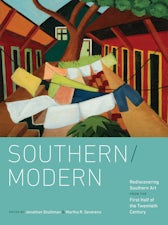Art As Politics in the Third Reich
By Jonathan Petropoulos

464 pp., 6.125 x 9.25, 110 illus., 2 charts, appends., notes, bibl., index
-
Paperback ISBN: 978-0-8078-4809-8
Published: February 1999 -
E-book EPUB ISBN: 978-1-4696-2033-6
Published: March 2014 -
E-book PDF ISBN: 979-8-8908-8430-5
Published: March 2014
Buy this Book
Petropoulos begins by tracing the evolution of official aesthetic policy, from the purges of museum staff and academics labeled as 'undesirable' in 1933 to the confiscation of Jewish-owned artworks in the late 1930s and the organized plundering of art from occupied areas during the war. He then reconstructs the collections of a dozen prominent Nazi officials--including Hitler, Göring, Goebbels, Himmler, Speer, and Ribbentrop--and argues that their private holdings defined their relationships to one another within the Nazi hierarchy in addition to reflecting their racist and nationalist beliefs. According to Petropoulos, art collecting offered the political elite a way to achieve legitimacy and social standing, thereby providing a common cultural language for the leaders of the Third Reich.
About the Author
Jonathan Petropoulos is John V. Croul Professor of European History at Claremont McKenna College in Claremont, California.
For more information about Jonathan Petropoulos, visit
the
Author
Page.
Reviews
"A masterpiece of ‘real’ historiography based on extensive research in primary sources concerning National Socialist Art policy throughout the globe."--Contemporary Austrian Studies
"Almost as soon as the Nazis seized control, they recognized that those who had the power to censor the arts . . . could control the government. An explanation of how this well-organized system worked is the strongest contribution of Art as Politics in the Third Reich."--Chicago Tribune
"Jonathan Petropoulos has made a significant contribution to our understanding of the cultural history of the Third Reich. . . . This work is a commendable embodiment of years of diligent research and will become a standard work on the history of the Third Reich."--German Studies Review
"This is a thoroughly researched and extremely useful work. . . . Indispensable for understanding the importance that the [Nazi] leadership attached to being cultured and the interpersonal relationships among the leaders."--Contemporary Sociology
"[A] fascinating, meticulously researched, and profusely illustrated book. . . . Petropoulos provides dramatic narrative as well as perceptive analysis. . . . Petropoulos has assembled a bounty of evidence which clearly demonstrates that the Nazi leadership was much more obsessed with art than we have imagined--not out of aesthetic appreciation, but rather hunger for prestige and material greed."--Canadian Journal of History
"Using a variety of archival sources, Petropoulos convinces the reader that art was employed as a means of displaying power in the widest political sense. Dividing his account in two sections--administering art and collecting art--Petropoulos demonstrates the interconnectedness of the two enterprises and reminds the reader that for the Nazis, art was politics, and politics a high art."--Choice



